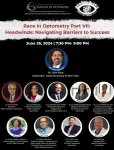(Press-News.org) Since the peak of the AIDS epidemic, the U.S. has achieved significant advancements in preventing and treating HIV, though progress has been uneven across regions and slower than necessary. In Missouri, where the number of new HIV diagnoses and deaths has not improved since 2017, there is a need to recapture momentum in addressing the disease.
In a bid to jump-start the stalled campaign against HIV in the region, researchers at Washington University School of Medicine in St. Louis and Saint Louis University plan to establish the Midwest Developmental Center for AIDS Research with funding from the National Institutes of Health (NIH). The center, slated to open in September, will aim to create a platform for researchers and public health workers to collaborate and coordinate their efforts to fight the HIV epidemic together.
“There’s a public perception that we’re on the other side of the HIV epidemic,” said Elvin Geng, MD, a Washington University professor of medicine who will direct the new center. “St. Louis continues to have a significant HIV epidemic. One problem we face here in St. Louis is that the scientific and public health communities are strong but siloed. The goal of this center is to break down those siloes so we can all work together more effectively to end the HIV epidemic in the region.”
Every year, about 500 people are newly diagnosed with HIV in Missouri, and nearly 200 die of disease related to HIV infection. Thirteen of the U.S. counties identified by the Centers for Disease Control and Prevention to be at highest risk of an HIV outbreak are in Missouri. Most people in the state get diagnosed late in the disease process, after their immune cells have begun to die off. This pattern of late diagnosis suggests that the official numbers probably underestimate the true infection rate in the state. Worse, it means that many people who could benefit from HIV treatment are not receiving it, which threatens their health and hinders efforts to limit the spread of the virus.
The NIH established the Centers for AIDS Research (CFAR) program in 1988 to promote high-quality research to combat the AIDS epidemic, which was then raging out of control. Over the years, 19 CFARs have been established throughout the country. The new center in St. Louis is a developmental CFAR, meaning it is in a five-year initiation phase.
“This center is built on collaboration between our regional universities,” said Enbal Shacham, PhD, a professor of behavioral science and health equity at Saint Louis University and the associate director of the center. “It will focus our efforts to grow research on HIV prevention, care and treatment to our St. Louis region together. I am thrilled to lead the Saint Louis University partnership particularly because of the opportunities this creates for our communities in improving HIV-related health equity and outcomes.”
The mission of the CFAR program is to provide a framework to bring the people who conduct the research into conversation with the people who are fighting the epidemic on the ground. To that end, Geng and center co-director Juliet Iwelunmor, PhD, a professor of medicine at Washington University, have pulled together a stakeholder advisory committee including representatives from the city and state health departments, as well as from Fast-Track Cities St. Louis, the local branch of an international campaign to end the HIV/AIDS epidemic by 2030, and the Metro St. Louis HIV Health Services Planning Council. The center will institute a variety of programs to enhance collaboration including:
Show Me the Response, an annual regional symposium that will give scientists and public health practitioners the opportunity to meet in person and share data and insights.
Partner Pilot Awards, which will go to research teams co-led by investigators from traditional research universities and nonresearch organizations.
Internship opportunities at the city’s Department of Health for students from Harris-Stowe State University, a historically Black university.
“The Midwest Center for AIDS Research will help diversify the approach to, and the leaders engaged in, efforts to mitigate the AIDS epidemic,” said Harvey R. Fields Jr., PhD, dean of the College of STEM at Harris-Stowe. “The inclusion of Harris-Stowe State University leverages institutional strengths, enhances institutional capability and provides Harris-Stowe’s developing health-care scholars with opportunity to make meaningful contributions to their own communities even as undergraduates.”
In addition, the center will participate in the STAR (Stimulating Training and Access to HIV Research Experiences) program, an innovative, multicenter, yearlong educational program that aims to develop the next generation of HIV research leaders by training undergraduate and graduate students in problem-based and bottom-up strategies for HIV-prevention research using community assets and resources to enhance efforts to end the HIV epidemic.
The center will be based in St. Louis and initially will focus on building relationships within the city and county. Over the longer term, the center will expand into outlying counties to address the state’s significant rural epidemic as well. Dima Dandachi, MD, the medical director for the Columbia/Boone County Public Health and Human Services Department in central Missouri and the medical director of the HIV/AIDS treatment and prevention program at University of Missouri Health Care, sits on the center’s scientific working group to help guide research priorities.
The center aims to support HIV research at all levels, from laboratory experiments to community program pilots. To ensure that research funded by the center will answer the questions most critical to public health efforts and to people living with HIV, projects will be selected by a committee composed of people from academic and nonacademic organizations.
“Ending the HIV epidemic in the Midwest region demands that we, the public health communities, scientific communities as well as everyday citizens and persons living with HIV, all work together as partners and leaders,” Iwelunmor said.
END
Midwest Center for AIDS Research to help end regional HIV epidemic
St. Louis-based center unites scientists, public health experts, nonprofits to fight virus
2024-06-27
ELSE PRESS RELEASES FROM THIS DATE:
WIC enrollment reduces poor pregnancy outcomes for parents and babies, study finds
2024-06-27
More than one in 10 households in the United States last year did not have access to adequate and nutritious food, according to the U.S. government. Further, food and nutrition insecurity lead to a higher risk of poor pregnancy outcomes.
The U.S. Special Supplemental Nutrition Program for Women, Infants and Children (WIC) is one of the main federal food assistance programs that aims to reduce food insecurity for eligible pregnant, postpartum and breastfeeding people and their children. WIC helps improve the health of participants and their families by providing access to food, nutrition education, and referrals ...
Northwestern researchers propose a new, holistic way to teach synthetic biology
2024-06-27
The field of synthetic biology, the science of manipulating biology, has a lot of “cooks in the kitchen,” which has both helped it flourish and made it unusually difficult to create a cohesive, consistent curriculum for students at every level of study. Each discipline involved — from chemical engineering to ethics — has a unique approach to teaching and literature, which creates inconsistencies between what scientists learn.
Now, Northwestern University researchers propose a new way to teach synthetic biology that uses different levels of organization — starting at the molecular scale and growing ...
Is ChatGPT the key to stopping deepfakes? Study asks LLMs to spot AI-generated images
2024-06-27
BUFFALO, N.Y. — When most people think of artificial intelligence, they’re probably thinking of — and worrying about — ChatGPT and deepfakes. AI-generated text and images dominate our social media feeds and the other websites we visit, sometimes without us knowing it, and are often used to spread unreliable and misleading information.
But what if text-generating models like ChatGPT could actually spot deepfake images?
A University at Buffalo-led research team has applied large language models (LLMs), including OpenAI’s ChatGPT and Google’s Gemini, toward spotting deepfakes of ...
NIH funds critical center in Detroit to lead efforts to investigate and mitigate health impacts of community-voiced chemical and non-chemical stressors
2024-06-27
DETROIT — Wayne State University received a four-year, $5.2 million P30 environmental health sciences core center (EHSCC) grant from the National Institute of Environmental Health Sciences (NIEHS) of the National Institutes of Health (NIH) in support of the “Center for Urban Responses to Environmental Stressors (CURES).”
This grant will allow the interdisciplinary CURES team of researchers, educators and community partners to continue its ongoing quest to understand the basis for urban environmental health disparities and the human health impact of environmental exposure to complex chemical and non-chemical stressors in Detroit's urban landscape. CURES is one of ...
TREC director Jennifer Dill named editor-in-chief of Transportation Research Record
2024-06-27
Jennifer Dill, director of Portland State University's Transportation Research and Education Center (TREC), has been named the inaugural editor-in-chief of the Transportation Research Record (TRR). The TRR—the flagship journal of the National Academies of Sciences, Engineering, and Medicine’s Transportation Research Board (TRB)—is one of the most cited and prolific transportation journals in the world, offering wide coverage of transportation-related topics.
While maintaining her current role as the director of TREC, Dill will begin her duties ...
SUNY College of Optometry focuses on diversity and inclusion in optometry
2024-06-27
New York, NY— This week, the State University of New York (SUNY) College of Optometry held a continuation of their annual webinar series, Race in Optometry which started in 2020. Aimed at fostering a national dialogue that leads to necessary changes to increase diversity in the optometric profession and education, the annual webinar focused on Headwinds: Navigating Barriers to Success. This webinar was the seventh installment in a series hosted annually around the Juneteenth holiday by the College’s Office of Continuing Professional ...
Taxing shared micromobility: How cities are responding to emerging modes, and what's next
2024-06-27
Shared micromobility (including shared electric scooters and bikes provided by private companies) is one of the newest transportation options that has come to cities in the last several decades. A new report explores the different ways cities charge shared micromobility companies to operate, and how these funds are used.
In the newly released report, John MacArthur of Portland State University, Kevin Fang of Sonoma State University and Calvin Thigpen of Lime examine data from 120 cities in 16 countries around the world. They also conducted a survey of cities’ shared micromobility ...
June research news from the Ecological Society of America
2024-06-27
The Ecological Society of America (ESA) presents a roundup of four research articles recently published across its six esteemed journals. Widely recognized for fostering innovation and advancing ecological knowledge, ESA’s journals consistently feature illuminating and impactful studies. This compilation of papers explores the potential for pines to establish in pine-free interior Alaska, internet sleuthing to assess birds’ extinction risk and more, showcasing the Society’s commitment to promoting cutting-edge research that furthers our understanding ...
Antibody-drug conjugate highly effective in preventing recurrence in patients with early stage HER2+ breast cancer, trial finds
2024-06-27
A year of treatment with a medicine made of an antibody and chemotherapy drug has proven highly effective in preventing stage 1 HER2-positive breast cancer from recurring in patients, a team led by Dana-Farber Cancer Institute researchers has found.
In a clinical trial involving 512 patients with the earliest stage of breast cancer that tested positive for the HER2 protein, 97% of those treated with trastuzumab emtansine (T-DM1) after surgery were alive and free of invasive cancer five years after treatment. The results, published online today in the Journal of Clinical Oncology, suggest that T-DM1 is a reasonable treatment approach for this stage 1 population, the study authors ...
Ephemeral streams, often overlooked, are major contributors to US river flow and water quality
2024-06-27
Ephemeral streams – temporary streams that only flow after rainfall or snowmelt – contribute more than 50% of the flow in downstream river systems and likely have a major influence on water quality across the United States, according to a new modeling study. The findings show how important ephemeral streams are for the transport of water and pollution into larger, more permanent water bodies. Excluding these streams from coverage under the U.S. Clean Water Act, say the authors, would significantly limit federal authority to protect downstream water quality. Ephemeral streams, which flow only in direct response to precipitation and are disconnected from groundwater sources, ...
LAST 30 PRESS RELEASES:
Making lighter work of calculating fluid and heat flow
Normalizing blood sugar can halve heart attack risk
Lowering blood sugar cuts heart attack risk in people with prediabetes
Study links genetic variants to risk of blinding eye disease in premature infants
Non-opioid ‘pain sponge’ therapy halts cartilage degeneration and relieves chronic pain
AI can pick up cultural values by mimicking how kids learn
China’s ecological redlines offer fast track to 30 x 30 global conservation goal
Invisible indoor threats: emerging household contaminants and their growing risks to human health
Adding antibody treatment to chemo boosts outcomes for children with rare cancer
Germline pathogenic variants among women without a history of breast cancer
Tanning beds triple melanoma risk, potentially causing broad DNA damage
Unique bond identified as key to viral infection speed
Indoor tanning makes youthful skin much older on a genetic level
Mouse model sheds new light on the causes and potential solutions to human GI problems linked to muscular dystrophy
The Journal of Nuclear Medicine ahead-of-print tip sheet: December 12, 2025
Smarter tools for peering into the microscopic world
Applications open for funding to conduct research in the Kinsey Institute archives
Global measure underestimates the severity of food insecurity
Child survivors of critical illness are missing out on timely follow up care
Risk-based vs annual breast cancer screening / the WISDOM randomized clinical trial
University of Toronto launches Electric Vehicle Innovation Ontario to accelerate advanced EV technologies and build Canada’s innovation advantage
Early relapse predicts poor outcomes in aggressive blood cancer
American College of Lifestyle Medicine applauds two CMS models aligned with lifestyle medicine practice and reimbursement
Clinical trial finds cannabis use not a barrier to quitting nicotine vaping
Supplemental nutrition assistance program policies and food insecurity
Switching immune cells to “night mode” could limit damage after a heart attack, study suggests
URI-based Global RIghts Project report spotlights continued troubling trends in worldwide inhumane treatment
Neutrophils are less aggressive at night, explaining why nighttime heart attacks cause less damage than daytime events
Menopausal hormone therapy may not pose breast cancer risk for women with BRCA mutations
Mobile health tool may improve quality of life for adolescent and young adult breast cancer survivors
[Press-News.org] Midwest Center for AIDS Research to help end regional HIV epidemicSt. Louis-based center unites scientists, public health experts, nonprofits to fight virus




